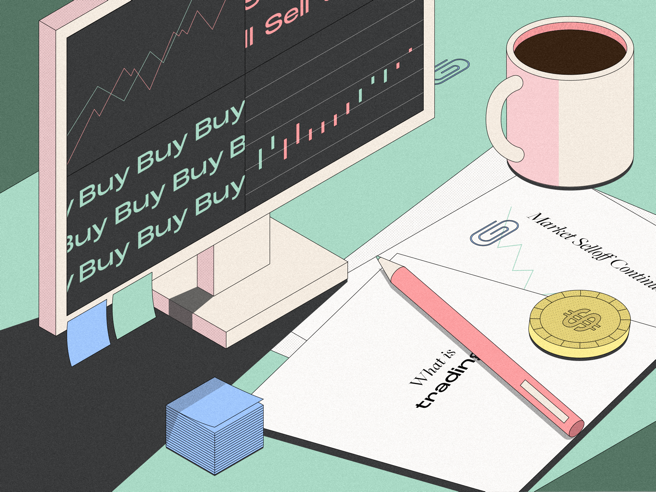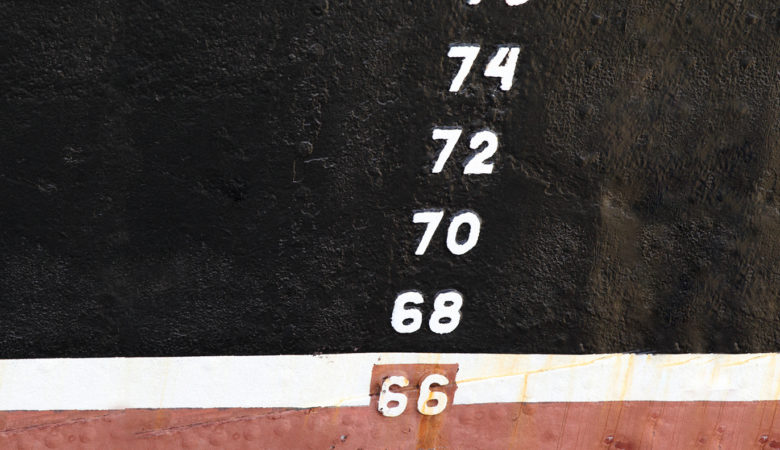Occasionally we’ll link out to relevant products that could be useful to our readers. Learn more about us here.
Most people who invest in the stock market invest for the long-term. The idea is to buy in when you’re young and then sell when you need the money in retirement. Day trading is a different animal and shouldn’t be considered investing at all.
Day traders try and profit off of small movements in the market. They might buy a single stock or other security and then sell it minutes or hours later. The goal is to take advantage of small, short-term price swings. If you can do that successfully, and if you’re trading in large volumes, then small profits can translate into big gains.
Day trading is an extremely risky way to invest because it’s speculative. To successfully day trade you need to understand financial markets, have an ability to analyze and identify trends and you need a lot of luck. If you’re interested in trying day trading, you need to do your research and understand the risks. It helps to practice with a demo account before investing real money.
What is day trading?
Until online investing platforms emerged in the 1990s, day trading was exclusive to professional traders, banks and other financial institutions. The dot-com bubble of the late ’90s also played a role in popularizing day trading, as investors flocked to the market to speculate on tech stocks. Today, anyone can practice day trading by opening an online brokerage account.
Day traders mostly work when financial markets are open, which is from Monday to Friday, 9:30 a.m. to 4 p.m. EST in North America, though some get up early or stay up late to trade on Asian and European exchanges. When a trader buys a security they’re opening a position, as it’s called. When they sell, they’re closing a position. Opening and closing the same position is called a “round trip.” Day traders can make up to hundreds of round trips throughout the trading day, but all trades are closed by the closing bell and no positions are held overnight.
Day traders can deal in stocks, bonds, currencies, commodities, options or futures, but they typically focus on one market. Day trading isn’t meant to be a casual hobby, though some try and make it one. It’s an active strategy that requires daily attention and regular due diligence. As with any type of speculative or higher-risk investment strategy, there’s a chance – and a good one – that you could lose all of your money.
Day trading vs. investing
It’s called day trading and not day investing for a reason. Trading is about using strategic techniques to try and maximize short-term returns. Investing involves gradually building a portfolio that helps achieve your long-term financial goals.
Most investors don’t need to worry about intraday market ups and downs because they’re in it for the long haul and hold a diversified portfolio of stocks, bonds, exchange-traded funds (ETFs) and index funds. Investment portfolios can be actively managed and will be rebalanced from time to time, but not with the same frequency, speculation or leverage as day trading.
If you want to invest money to help meet your long-term goals such as paying for university, buying a home or retirement, you’re better off building a portfolio of diversified investments relative to your risk tolerance, age and time horizon. You can work with a financial advisor, robo-advisor or manage your own self-directed portfolio.
Trade stocks commission-free and get a $10 cash bonus
Open a Wealthsimple Trade account to buy and sell thousands of stocks and ETFs commission-free. You’ll get a $10 cash bonus when you join.
Terms and conditions apply.
How to start day trading
Before you open a brokerage account, start by doing a bit of research, strategic planning, limit setting and practice trading.
1. Decide on a trading plan
Day trading moves quickly and can be stressful, so you’ll need to create some ground rules to keep yourself focused. Think about the amount you’re trading, and the impact worse-case scenario losses could have on your overall portfolio. Decide how much risk you’re willing to take on and how much money you’re willing to lose before selling a security, but also think about at what point you’ll sell if that security increases in value.
You’ll also need to choose what asset class you want to invest in, whether it’s stocks, bonds, commodities, currencies, futures and options. Stocks and currency markets are popular for day traders because of their liquidity, which means they can be quickly and easily traded in large volumes without affecting the underlying share price.
2. Set up a demo account
Before you start trading real money in the real world, you can set up a demo account and see how day trading works in a safe, simulated environment. Many online brokerages offer this feature, which gives you virtual pretend cash and a trial period to test out all of the brokerage’s features. It’s a good opportunity to test and hone your day trading strategies, especially under different market conditions. It’s also a way to evaluate an online trading platform’s features before signing up. And if you burn through all your money like a bad game of Monopoly, you can always start over and reassess.
3. Set goals and know your limits
Part of a trading plan includes risk management and knowing how you’ll react to an inevitable drop in a security’s price. You can budget a specific amount of money to devote toward day trading, but you should never risk money that you otherwise need for rent/mortgage, bills, groceries or other necessities. In some ways, day trading is like gambling. It can be fun to do, and you may make some money, but you never want to bet your retirement money in a poker game.
The more money you can earmark for trading, the easier it is to buy and sell in large quantities, though it’s best for new traders to start with a small amount. In general, it’s recommended not to invest more than 1% to 2% of your account balance on a single trade. Once you gain more experience and develop a consistently successful day trading strategy, you can consider trading higher amounts.
One way to limit losses is by placing a stop-loss order, which instructs your brokerage to buy or sell a security when it hits a certain price. You can also place a daily-stop loss order, which specifies the overall amount of money you’re willing to lose in a day before withdrawing.
4. Understand how day trading is taxed
How investment gains are taxed depends on whether the Canada Revenue Agency (CRA) considers you to be a professional day trader. There’s no hard line that divides an average trader from a professional, but the CRA has the discretion to make the call based on a number of factors:
- Volume and frequency of trading
- Length of ownership of securities
- Types of securities owned (ie. mostly speculative)
- Your profession and level of stock market knowledge
- If trading is your main source of income, or substantially supplements it
When individuals earn capital gains on their investments, 50% of those gains are taxed at your marginal tax rate. If the CRA considers you a professional day trader, 100% of gains are taxed as business income. To make sure you’re not accidentally stiffing the CRA, you should consult a tax professional to figure out how your trading activities should be classified.
Registered accounts such as TFSAs, RRSPs and RESPs cannot be used for day trading. These types of accounts are meant to act as a tax shelter for personal income, not business income. The CRA looks out for day trading and speculative activity, and you’ll be on the hook for taxes owed if you’re not following the rules.
5. Open a brokerage account
Finally, you’ll need to open a brokerage account with an online trading platform. If you have your personal information organized and at the ready, it’s about as easy as opening a bank account. You’ll need to provide your address, a valid government ID, a social insurance number (SIN) and banking information to transfer funds to the brokerage account.
Best day trading platforms
There are several online trading platforms in Canada that offer accounts and pricing plans for active traders. Timing and reliability is important with day trading, so look for a platform that has the best functionality for your needs—and one that doesn’t charge outrageous fees for frequent trades. Here are a few things to consider.
Fees and commissions: Online brokerages charge commissions when you buy and sell securities, as well as miscellaneous fees for things like currency conversion or carrying a balance below a certain amount. Many discount brokers charge a flat rate per trade, while others offer commission-free trading on stocks and ETFs. High volume trading can trigger commissions that eat into your profits, so check out brokers that offer pricing deals for active traders.
Technology: Day trading relies on tracking price movements that change from minute to minute, so a brokerage with real-time stock quotes is a must. Look at how functional and user-friendly the platform is, and find out the volume of trading they usually handle and how quickly they execute trades.
Tools and resources: Self-directed traders need market data and news to stay current and competitive, and most brokers offer additional features such as stock screening and comparison tools, educational articles and tutorials, daily newsletters and expert research and analysis. It’s likely that you’ll have questions if you’re a new trader, so check whether potential brokerages offer customer support by phone, email or online chat.
When you read about day trading, you’ll often see it described with strong warnings attached: risky, speculative, and probably not for the average investor. It’s a more complex way to make money in the market than buying and holding stocks over a long period of time, and should be approached with caution.
But you also aren’t limited to one trading styles, and can incorporate day trading, swing trading, or long-term buy-and-hold strategies into your overall portfolio management approach if you wish. If you have the interest, some cash to spare and a willingness to learn, you can start with a demo account before graduating to day trading on a real brokerage platform.
Day trading vs. swing trading
Swing trading is another type of active investing strategy, and takes a slightly longer position than day trading. Instead of buying and selling securities within a single day, swing trading involves buying and holding a position for several days or weeks. Swing trading doesn’t require the same level of research and effort as day trading, and can be done on a more casual basis at any time of day. Because swing trades have a longer timeframe, there’s the potential for both higher profits but also larger losses. Despite the “longer” time horizon, it’s still a risky way to play the market.
How much money do you need to start day trading?
There aren’t any specific rules about how much money you need to start day trading in Canada, but some brokers require a minimum balance to open a trading account (for example, $1,000). This is different from the U.S., where day traders (called pattern day traders) are required to keep at least $25,000 in their brokerage account. If you’re trading U.S.-listed securities, your brokerage might require you to meet the $25,000 minimum.
You can use a cash or margin account, which allows you to borrow money from your broker to make trades. Using borrowed funds to purchase securities is called leveraging, or trading on margin. It gives you more buying power to chase higher potential returns, but it can also magnify losses and drive you into debt.
Ultimately, day trading is for strong-willed market participants who don’t mind losing in exchange for potentially hitting a few home runs. Make sure you do your homework, really understand the markets and have enough money to play around with. Whatever you do, always keep this popular investing saying in the back of your mind: Don’t invest money you can’t afford to lose.











